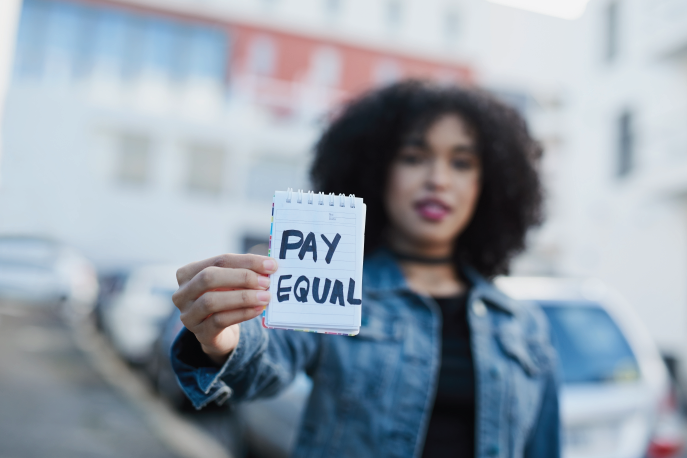We’re in a month that celebrates the fight for women’s equality – yesterday was Black Women’s Equal Pay Day, and August 26 is Women’s Equality Day. These days serve as important reminders that true equity for women remains a goal that takes open conversation and hard work to achieve.
Last week, RALIANCE Executive Director Ebony Tucker shared her perspective on how workplaces can revamp their hiring practices to build more equitable, diverse organizations. She explained that asking job candidates about their salary history during interviews can exacerbate income inequalities for systemically disadvantaged groups, particularly women and women of color, because it can lead to continued underpayment.
This week, RALIANCE took a deeper look at the issue of income inequality, as well as some ways to promote equal pay for women.
First, let’s take a look at the numbers. Census bureau data from 2018 reveals an income gap for women that cannot be ignored: Women of all races earned an average of only 82 cents for every dollar earned by men.
The wage gap increases for women of color, with Black women making only 62 cents for every dollar made by men, and Hispanic or Latino women making only 54 cents. (White women make 79 cents.) According to the Center for American Progress, transgender and immigrant women also experience steep inequality made worse by compounding biases against them.
This pervasive inequality has massive ramifications for women. Being underpaid leaves them far less empowered than their male counterparts. For example, unequal pay can make it harder to save sufficient funds to leave an unfulfilling job or a toxic work environment.
But here’s the good news – there are solutions to this problem:
– Banning questions about salary history. As discussed above, such questions during job interviews make it harder for women to break a cycle of unequal pay. A recent study from Boston University found that women saw an 8% pay increase in states with bans on questions about salary history.
– Raising the minimum wage. According to the National Women’s Law Center (NWLC), women represent two-thirds of the minimum-wage workforce. The disproportionate role of women in minimum-wage labor means that – as a group – they have far fewer resources relative to the general population of male workers. NWLC noted that, “because women are the majority of workers who would see their pay go up, increasing the minimum wage could narrow the gender pay gap.” Notably, states with higher minimum wages have already proven to have a smaller gap in pay between men and women.
– Changing a culture of secrecy around pay. The Department of Labor mostly protects the right of employees to openly discuss their compensation, but many people are still hesitant to discuss their wages, allowing pay gaps within companies and industries to survive unchallenged. Companies that are proactively transparent about pay can help change this dynamic. Notably, a study of compensation practices at public Canadian universities found that laws requiring pay transparency reduced the gender pay gap at these institutions by roughly 30 percent. It’s reasonable to expect that such laws would have a similar impact in other fields and industries.
Importantly, policymakers are regularly looking for new ways to close the gender pay gap. For example, Senator Kamala Harris – the Democratic Party’s new vice presidential nominee – has proposed a one percent fine on employers’ profits for each one percent difference in wages between male and female employees performing similar work. Under her proposal, companies of 100 or more employees would need to receive an “equal pay certification” every two years.
Unequal pay for women is a massive problem that requires the collaboration of people in power to solve – that includes executive and political leaders across industries and party lines. Taking meaningful action to address this inequality is one of the best ways to ensure a better future for women of all races.
Thanks for reading! Next week, we’ll take a look at another issue facing working women: bias against taking career breaks to raise children, a problem that unequal pay actually makes worse. Check back next week to find out why.

